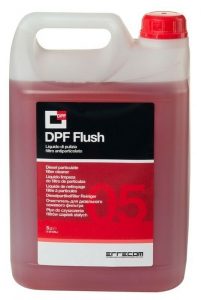Why does my dpf not regenerate
There are many reasons as to why your Diesel Particulate Filter (DPF) may not be starting or completing its regeneration cycle. The first thing to check is that you have more than 1/4 of tank of Diesel, as many cars will not start to regenerate their DPF with low fuel levels.
The next is in relation to its environment, have you added a DPF Cleaning additive to help lower the exhaust temperature at which your DPF will regenerate and then taken the Car for a long drive at motorway speeds?. By far the biggest cause of DPF regeneration failure is firstly down to how the car is used (repeated short journeys or City Driving) or perhaps the DPF Cycle starting but then the car stopped and the engine turned off before the DPF Regeneration can complete.
Often there can be signs of an ‘aborted dpf regeneration cycle”, such as the Engine Radiator Fan continuing to run on even after the engine has been stopped. If this is happening, then you really need to take the car on a much longer drive in order to allow the regeneration process to begin again, but next time, allow it more driving time to complete the cycle.
 So the first thing that you should be trying is this, first add a suitable DPF Additive to your Fuel tank and then take at least a 40 minute journey at Motorway speeds, to enable your car to reach the parameters required to start, and then successfully complete a full DPF regeneration cycle. This is also, by far the cheapest solution!.
So the first thing that you should be trying is this, first add a suitable DPF Additive to your Fuel tank and then take at least a 40 minute journey at Motorway speeds, to enable your car to reach the parameters required to start, and then successfully complete a full DPF regeneration cycle. This is also, by far the cheapest solution!.
Secondly, how long has the DPF Light been illuminated for?, if you have continued with the style of driving which caused the DPF Filter to become blocked in the first place for a few hundred more miles with the warning light lit, then your DPF may have gone past the stage where it will carry out an automatic regeneration, and you may need to take your car into a Garage and have a forced regeneration carried out using diagnostic software. This is why it is important to do step one above as soon as possible, in order to prevent reaching this stage.
The third reason for failed DPF Re-generations is perhaps down to a failed component or sensor elsewhere in the engine. Cars are now extremely sensitive to sensor failures especially where their emissions systems are concerned, and a perfect set of conditions in relation to parameters, such as Engine Coolant Temperature, Exhaust Temperature, EGR Operation and even all of the glow plugs working can be required before a routine DPF Regeneration Cycle can take place.
If any of these parameters aren’t reached, then the car will stubbornly and silently refuse to regenerate its DPF during normal driving, and often even fail to illuminate the Engine Management light, so the first time you become aware that there is an issue somewhere on the car, is when the DPF light comes on, telling you that your DPF is becoming blocked, which inevitably means that it has been unable to carry out an automatic DPF cleaning regenerative cycle for some time – probably as much as several hundred miles overdue.
So, if you are getting repeated lighting of the DPF Warning Light, then it is probably time to either evaluate your use of the car and how it is used, or carry out a diagnostic reading for fault codes, to make sure that there are no other problems elsewhere on the car.
Once you have successfully managed to regenerate the Car’s DPF system, the key is in future prevention. Look at taking the car, on a longer drive, at least for an hour every 250 miles, also add a good quality diesel fuel additive, and ideally also consider avoiding supermarket diesel fuel, and using premium fuel. The idea behind the fuel suggestion, is that premium fuels, and some diesel additives allow the car to run much cleaner, and with less soot particles to block the DPF filter, meaning longer intervals between actual re-generations.
